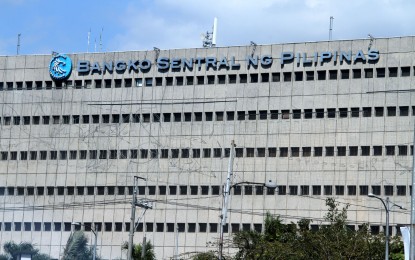
MANILA -- Economists still see another cut in the Bangko Sentral ng Pilipinas’ (BSP) key policy rates this year after the 25 basis points reduction Thursday but said the next reduction depends on developments on the novel coronavirus (2019-nCoV), among others.
In a report released Friday, Fitch Solutions said it is, in the meantime, keeping its 6.3 percent growth forecast for the Philippine economy this year and the 3.1 percent average inflation rate despite the risks from the 2019-nCoV.
It said the nCoV scare is forecast to impact the economy through tourism and trade but the unit of Fitch Ratings said it needs to get more figures before it revises its projection on these two items.
The Philippine government has implemented a ban against the entry of tourists from mainland China, Hong Kong and Macau as a result of the outbreak.
This is seen to make a dent on the Philippines’ tourist arrivals since Chinese nationals account for 12 percent of arrivals in the Philippines as of 2018 and Fitch Solutions said share of tourism in the domestic economy’s output is about 25 percent.
This is also seen to “significantly” hurt the domestic gaming industry since about 26.4 percent of the workers are accounted for by the Chinese, the report said.
Foreign direct investments (FDIs) is also projected to be affected since FDI inflows from China, the world’s second-largest economy, has risen to about 10 percent during the Duterte administration.
The report said “a disruption to outbound Chinese travel could disrupt investment plans,” it said, citing that “this could pose some risks to funding for infrastructure and would mean larger government contributions instead.”
It said while Fitch Ratings is currently maintaining its forecasts “we believe that the risks to the downside posed by the viral outbreak will prompt the BSP to make another pre-emptive cut to the policy rate in H120, taking it to 3.50 percent.”
The 25 basis points cut in the BSP’s key rates resulted in the drop of the overnight reverse repurchase (RRP) rate to 3.75 percent, which, in turn, brought the country’s real rate to 0.85 percent.
Last January, inflation rate rose to 2.9 percent from month-ago’s 2.5 percent.
The report said the country’s real rate is considered attractive compared to those of other emerging markets (EMs) outside the region.
“As such, we believe a further cut would see little peso volatility in response, with exchange rate volatility still at relatively low levels as measured by at-the-money options contract,” it said.
“Moreover, improved reserve buffers and a stable outlook for global growth will keep investor sentiment in check,” it added.
ANZ Research forecasts another 25 basis points reduction in the BSP rates in the second quarter this year after the pre-emptive cut Thursday.
“However, a higher-than-expected impact from the coronavirus may extend the easing cycle further,” it said.
Capital Economics forecasts an additional 25 basis points cut on BSP rates in the coming months due to weak growth outlook.
It said while it forecasts the country to be “more insulated from the economic fallout of the coronavirus than most other countries in the region” the ban against tourists from China, Macau and Hong Kong will affect the tourism and industry sectors.
This burden will add to the earlier risks like the slowing consumption growth and weak exports, it said.
It cited that even before the coronavirus problem came out Capital Economics already discounted that the economy can sustain its 6.5 percent output in the last quarter of 2019 due to existing challenges.
“Growth now looks even more likely to fall short of the government’s 6.5-7.5 percent target this year,” it said.
On the other hand, Capital Economics is optimistic that the inflation rate will not be an issue for the BSP despite its rise due to faster food inflation and since dipping to 0.8 percent last October.
“The big picture is that the headline rate is still comfortably within the Bank’s 2-4 percent target band and it is likely to stay there throughout the rest of 2020,” it added. (PNA)
